About 11,000 extreme weather events killed more than 528,000 people and caused economic losses of around US$ 3.08 trillion between 1996 and 2015. Which countries faced the maximum brunt? How can we prevent and prepare?
The statistics is intimidating, but it is important to contextualise ongoing climate policy debates, especially the international climate discussions.
Ten most affected countries
Africa, the host region of the UN climate summit 2016, is severely affected by extreme weather events with four countries ranking among the 10 most affected countries in 2015–Mozambique (1st), Malawi (3rd), Ghana and Madagascar (joint 8th position).
|
Ranking 2015 (2014) |
Country | Region |
CRI score |
Death toll |
Deaths per 100 000 inhabitants |
Absolute losses (in million US$ PPP) | Losses per unit GDP in % | Human Development Index 2014 |
| 1 (23) | Mozambique | Africa |
12.17 |
351 |
1.25 |
500.07 |
1.499 |
180 |
| 2 (138) | Dominica | North America |
13.00 |
31 |
43.66 |
611.22 |
77.369 |
94 |
| 3 (60) | Malawi | Africa |
13.83 |
111 |
0.61 |
907.98 |
4.451 |
173 |
| 4 (10) | India | South Asia |
15.33 |
4317 |
0.33 |
40 077.22 |
0.501 |
130 |
| 5 (29) | Vanuatu | Oceania |
20.33 |
11 |
4.09 |
278.86 |
40.650 |
134 |
| 6 (94) | Myanmar | Asia |
20.83 |
173 |
0.33 |
1 359.65 |
0.479 |
148 |
| 7 (138) | The Bahamas | North America |
22.83 |
33 |
9.07 |
80.64 |
0.904 |
55 |
| 8 (118) | Ghana | Africa |
23.33 |
267 |
0.99 |
306.28 |
0.265 |
140 |
| 8 (34) | Madagascar | Africa |
23.33 |
118 |
0.49 |
228.04 |
0.642 |
154 |
| 10 (62) | Chile | South America |
25.17 |
39 |
0.22 |
2 652.69 |
0.627 |
42 |
▶ Data Source: GLOBAL CLIMATE RISK INDEX 2017, German Watch
$3 Trillion Damage Dilemma
Between 1996 and 2015, the economic loss due to extreme weather events was estimated at a staggering $3.08 trillion with India and China bearing the maximum brunt.
▶ Data Source: GLOBAL CLIMATE RISK INDEX 2017, German Watch
At the frontline of climate change
While studies are looking into the risk of extreme events due to the influences of climate change, the 12th edition of the Global Climate Risk Index shows the level of exposure and vulnerability to extreme events to help countries prepare better for more frequent and/or more severe events in the future.
▶ Note: Vunerability and Lack of adaptation capacity in per cent
▶ Data Source: GLOBAL CLIMATE RISK INDEX 2017, German Watch and World Risk Report 2016 published by the United Nations University (UNU) Institute for Environment and Human Security (UNU-EHS) and Bundnis Entwicklung Hilft
Climate change: a continuous threat to Africa
Africa is especially vulnerable to the impacts of climate change, mainly because of its low adaptive capacity. Rising temperatures and changes in precipitation patterns are likely to reduce the already low agricultural output and challenge food security. In 2015, African countries have been heavily struck by weather catastrophes.
✎ move mouse over bars to know more
▶ Data Source: GLOBAL CLIMATE RISK INDEX 2017, German Watch
Adaptation capacity
Where does Africa stand when it comes to adaptation to Climate Change? Be it lack of drought-resistant crops, early-warning systems for floods or urban infrastructure protection measures, the African countries such as Chad, Liberia, Mali, Sudan and Eritrea fare poorly on building adaptation capacity.
✎ move mouse over particular country to know more
▶ Data Source: World Risk Report 2016 published by the United Nations University (UNU) Institute for Environment and Human Security
(UNU-EHS) and Bundnis Entwicklung Hilft
Sub-sectors for adaptation and mitigation actions at the farm level
 From maintaining productivity of soils to building resilience of cropping systems, there are several agriculture practices needed for adaptation and mitigation of climate change impacts and yielding economic benefits.
From maintaining productivity of soils to building resilience of cropping systems, there are several agriculture practices needed for adaptation and mitigation of climate change impacts and yielding economic benefits. 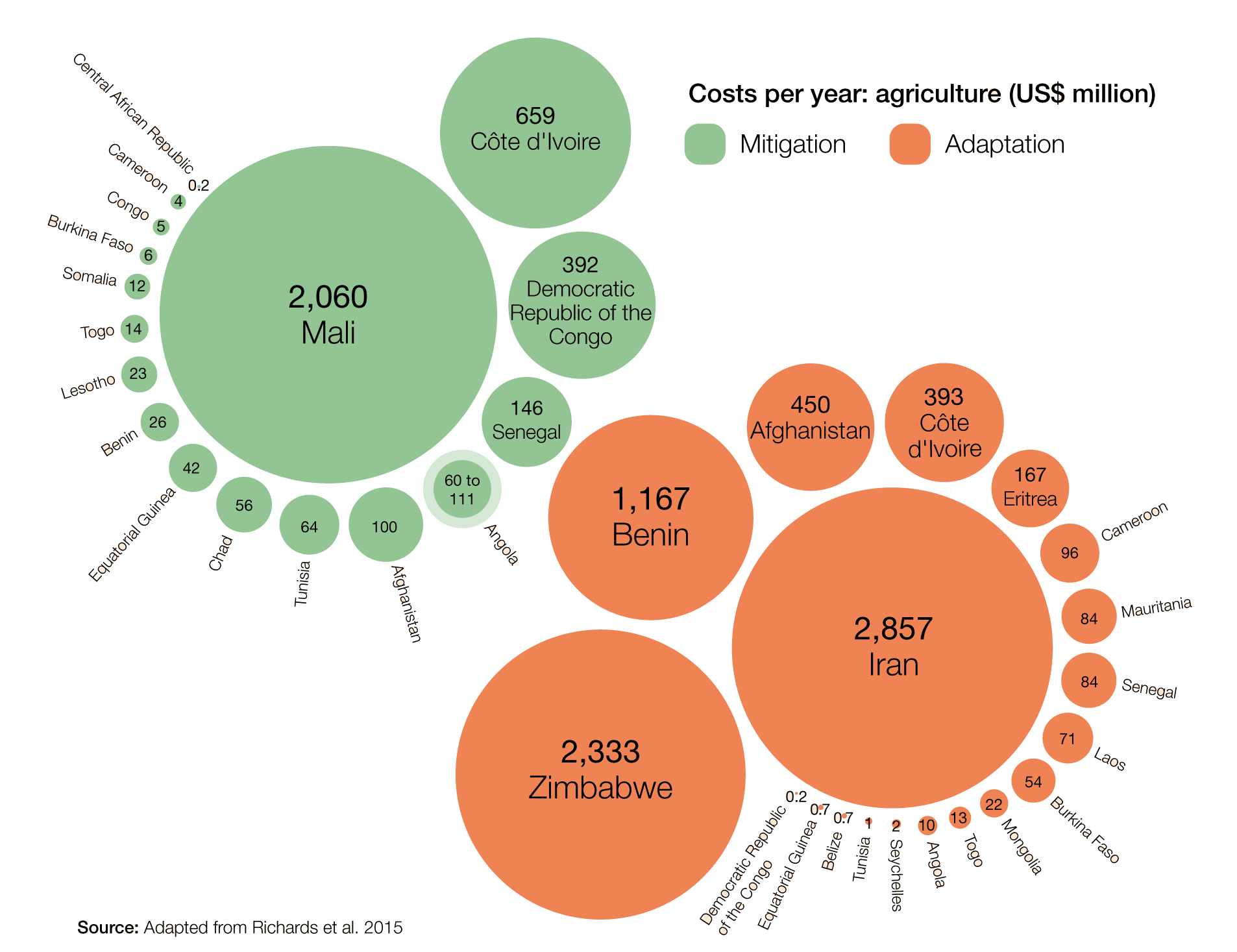
Here's a brief rundown on what practices can be followed as a part of climate adaptation and mitigation efforts.
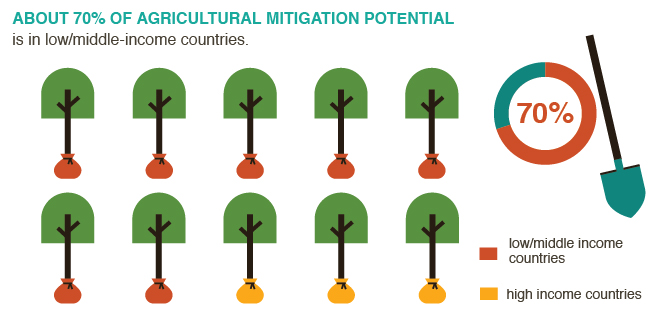
 Soils and land
Soils and land
A suite of practices can contribute to the stability and productivity of soils. Minimum or no-till, along with mulch or other soil cover reduces erosion by up to 80 per cent. It increases soil organic matter, increases soil-water infiltration and reduces runoff. On grasslands, improving pasture with irrigation or leguminous species can provide more feed for livestock and avoid land degradation.
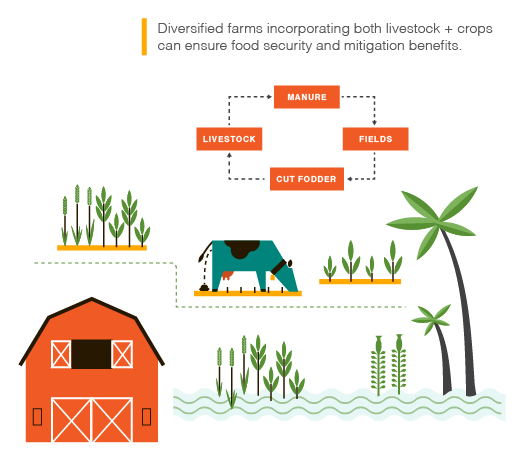
 Livestock
Livestock
Climate change threatens to affect livestock systems in several ways. But it is tricky to raise livestock as it contributes about 14 per cent of greenhouse gas emissions globally. Adaptation options include changing livestock breeds or species, adjusting stocking densities and improving resilience of cropping systems since crop residues is a feed source.
 Crops
Crops
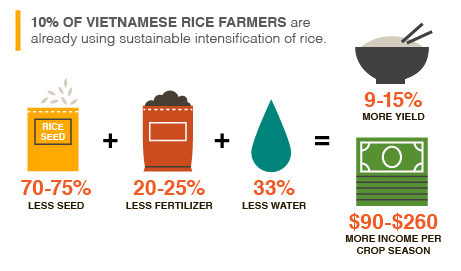 Farmers may replace crop varieties or species to those more resistant to drought and disease. Replacing coffee with cocoa is one such example. Changing the timing or location of cropping activities is also recommended. Besides pest, disease and weed management, diversifying crop species will be critical to ensure climate resilience.
Farmers may replace crop varieties or species to those more resistant to drought and disease. Replacing coffee with cocoa is one such example. Changing the timing or location of cropping activities is also recommended. Besides pest, disease and weed management, diversifying crop species will be critical to ensure climate resilience.
 Water
Water
Capturing and storing water for later use and plastic mulching (practices to conserve soil moisture) are adaptive practices for building climate resilience. Some countries have been experimenting with more efficient use of irrigation water like drip irrigation.
 Fisheries
Fisheries
Temperature variations and saline intrusion into freshwater habitat due to climate change affect aquaculture and fisheries throughout the world. Mangrove protection and rehabilitation gives a protective shield to aquatic ecosystems, fisheries and aquaculture production systems. Diversification of livelihoods and improved forecasting and early warning systems help coastal communities in disaster preparedness.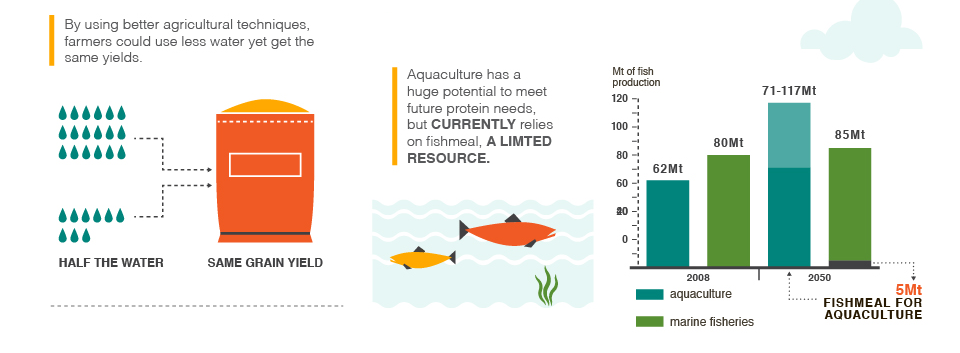
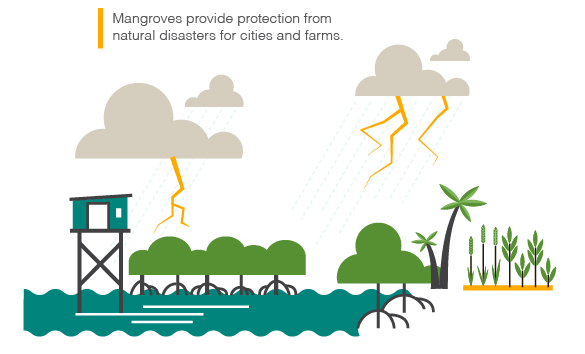
 Trees
Trees
Erratic rainfall, extreme heat and pest put enormous pressure on tree-cropping systems. Besides opting for diversification with shade trees and other species with mitigation potential, measures need to be taken to improve soil, nutrient and pest management practices. Integrating trees into cropland and grazing land can increase agro-ecosystem resilience.
¤ Data Courtesy:
1. Global Climate Risk Index, 2017, German Watch
2. World Risk Report 2016 published by the United Nations University (UNU) Institute for Environment and Human Security
(UNU-EHS) and Bundnis Entwicklung Hilft
3. The Economic Advantage: Assessing the value of climate-change actions in agriculture, IFAD, 2016
¤ Text, design and Analysis: Lalit Maurya and Subhojit Goswami
BACK TO TOP